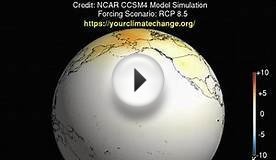Global warming temperature Changes
 Despite reports of a global warming "hiatus, " a new study shows that the number of areas being affected by extreme heat are on the rise and that the hottest temperatures on the planet are also increasing.
Despite reports of a global warming "hiatus, " a new study shows that the number of areas being affected by extreme heat are on the rise and that the hottest temperatures on the planet are also increasing.
The idea of a hiatus comes from reports of recent slowing in the rise of the globe’s average temperature. But average temperature is only one measure of the state of the Earth’s climate, and in some ways, it’s a rather poor one. After all, nobody actually experiences the planet’s average temperature.
Extreme heat and dry conditions have helped lower Lake Mead's water level precipitously. New research shows more areas around the globe have experienced extremely high temperatures and those temperatures are on the rise since 1997.
Credit: ChrisMRichards/Flickr
Extreme temperatures are another metric, one that’s much more pertinent to people’s lives and livelihoods. Higher temperatures can reduce crop yields and drive up energy usage. And heat waves are the No. 1 weather-related killer in the U.S. There is evidence that suggests heat waves are becoming more likely due to climate change. Analyses of heat waves in Russia in 2010, Texas in 2011, and Australia in 2012 have all indicated that climate change played a role in making these events more likely.
In a commentary published in Nature Climate Change on Wednesday, researchers looked at changes in the prevalence of extremely high temperatures over land since 1979. Their analysis runs through 2012, the last year for which data are available.
“This study shows that the frequency of hot extremes over land has continued to increase in the last 15 years, despite an apparent stabilization of the global mean temperature, ” study lead author and ETH Zurich researcher Sonia Seneviratne said in an email.
To perform the analysis, two datasets were used to essentially divvy the globe’s land into grids and then look at shifts in the number of areas experiencing 30 days of extreme heat per year compared to the 1979-2010 average. The study defined extreme heat as daily temperatures in the top 10 percent for a given area.

